Auctions
Sotheby’s Notched a Solid $408.5 Million Modern Art New York Sale Fueled by the Reliable Churn of Blue-Chip Monets and Picassos
The sale set new records for Milton Avery and Leonora Carrington.
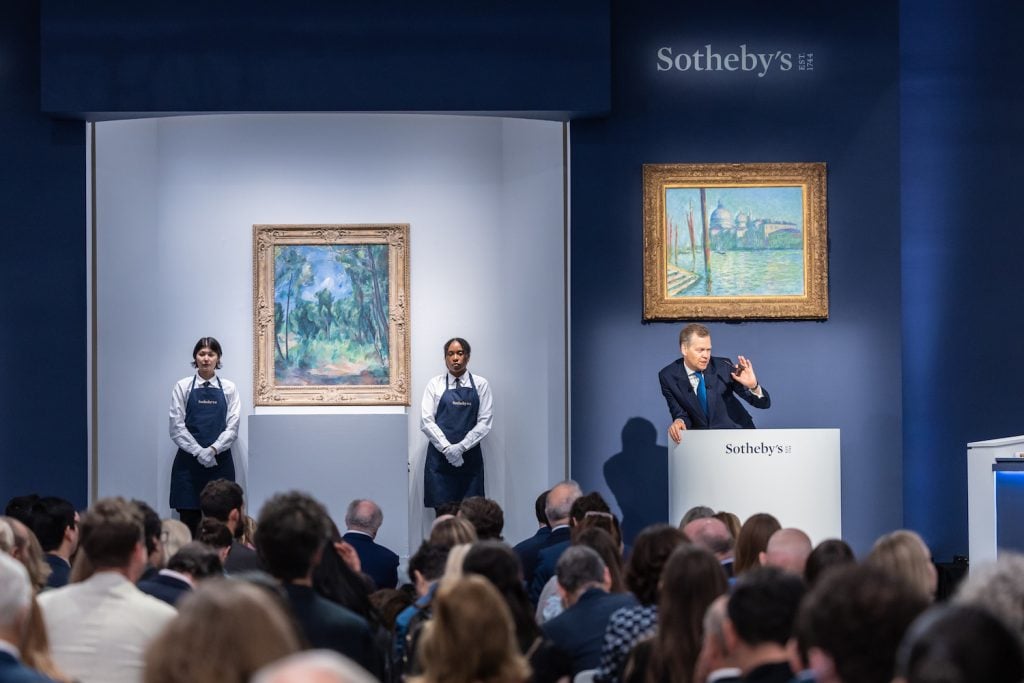
The sale set new records for Milton Avery and Leonora Carrington.

Eileen Kinsella

The shake-up of conventional auction categories in recent years made tonight’s Modern art sale at Sotheby’s a little disorienting. Reliable trophy names such as Monet and Picasso were offered alongside more recent works from the likes of Philip Guston, Barnett Newman, and Tamara de Lempicka—and works by the former category stole the show tonight.
The sale pulled in a solid total of $408.5 million, on the high end of its presale estimate of $329.7 million to $428.2 million—which is roughly double what the house projected for the same sale a year ago.
Bidding was particularly robust, if not quite frothy, for the blue-chip stars of the Modern and Impressionist periods.
“There were no fireworks tonight, but the sale did remarkably well considering the works on offer and the global state of affairs,” said art adviser Wendy Cromwell after the sale.
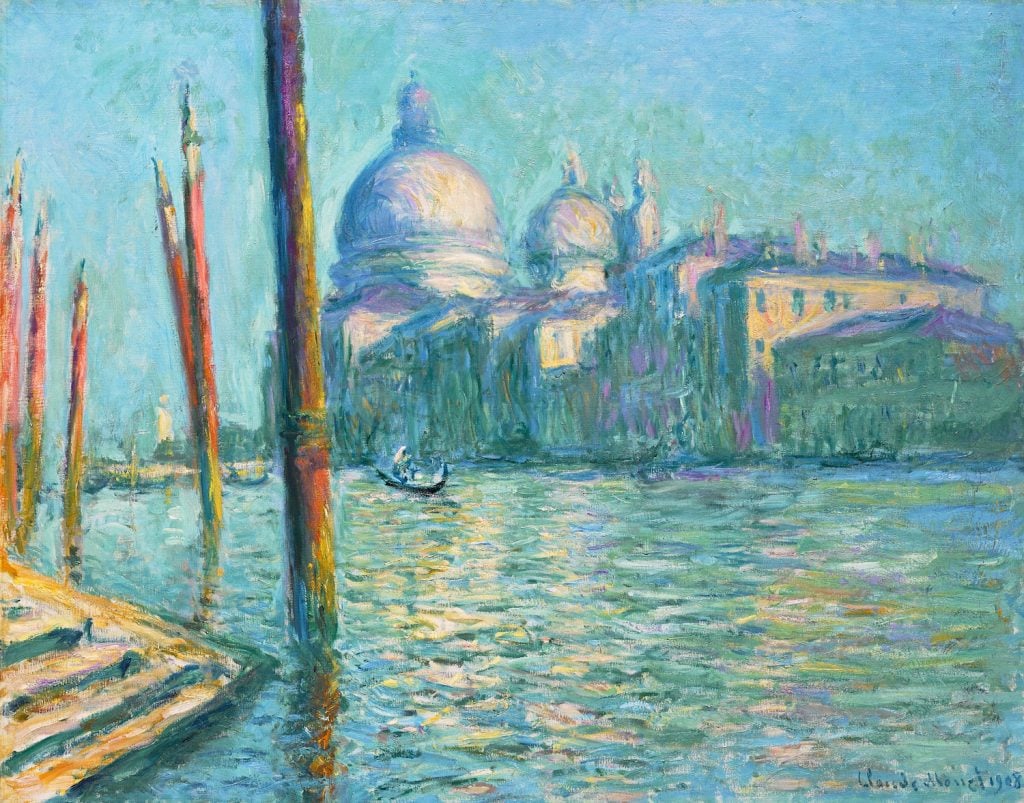
Claude Monet, Le Grand Canal et Santa Maria della Salute (1908). Image courtesy Sotheby’s.
Works by Monet have been on a tear this season, as witnessed at Christie’s last week when three sold as part of the Anne Bass sale, which raked in $188.4 million.
That streak continued tonight at Sotheby’s. One of the star lots, Claude Monet’s Venetian scene painting Le Grand Canal et Santa Maria della Salute (1908), backed by an irrevocable bid, was expected to sell for an unpublished estimate in the region of $50 million.
Auctioneer Oliver Barker opened the bidding around $46 million. A few $1 million bids bumped it up to $49 million, when, despite coaxing and ample time for further competition, the work was hammered down to Brooke Lampley, worldwide head of sales for global fine art at Sotheby’s. With premium, the final price was $56.6 million. (Final sale prices include buyer’s premiums; estimates do not.)
Two other Monets successfully sold at tonight’s sale, including Les Arceaux de roses, Giverny (1913), estimated at $20 million to $30 million. It was hammered down to Sotheby’s Asia chairman Patti Wong, whose client on the phone seemed to be the lone bidder, for $20 million (or $23.3 million with premium).
An earlier Monet winter scene, Effets d’hiver a Argenteuil (1875), estimated at $5 million to $7 million was sold after a few bids to a buyer seated in the room for a premium inclusive $6.3 million. The total for all three Monet works was $86.2 million, and all were backed by outside guarantees.
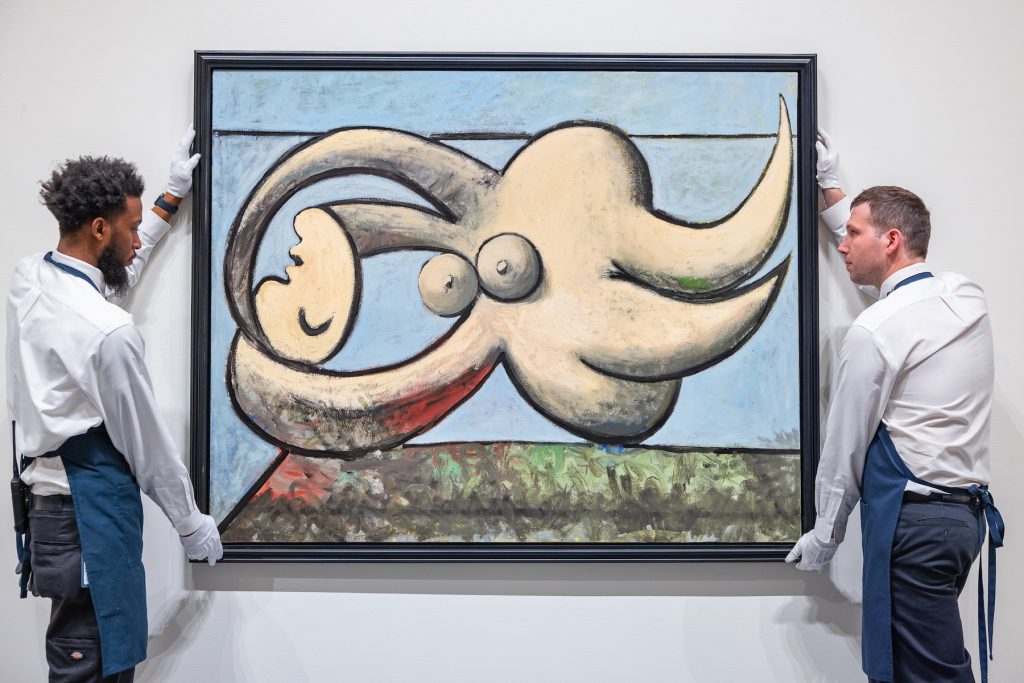
Pablo Picasso, Femme nue couchée (1932). Photo courtesy of Sotheby’s New York.
Another highlight was Pablo Picasso’s Femme nue couchée (1932), which was expected to generate more than $60 million and was, notably, not backed by a guarantee. It was consigned by top collector Steve Cohen, who had owned it since 2008, when he acquired it through Gagosian Gallery.
The painting depicts Picasso’s young lover Marie-Thérèse Walter as a five-limbed sea creature against a blue background, her head resting on one of the tentacles.
Bidding opened around $55 million and reached $58.5 million ($67.5 million with premium), making it the evening’s top-priced lot. Barker acknowledged the winning bidder by name: “I see your bid, Amy. You used to work here, don’t be a stranger,” he said, referring to former Sotheby’s executive turned private advisor Amy Cappellazzo.
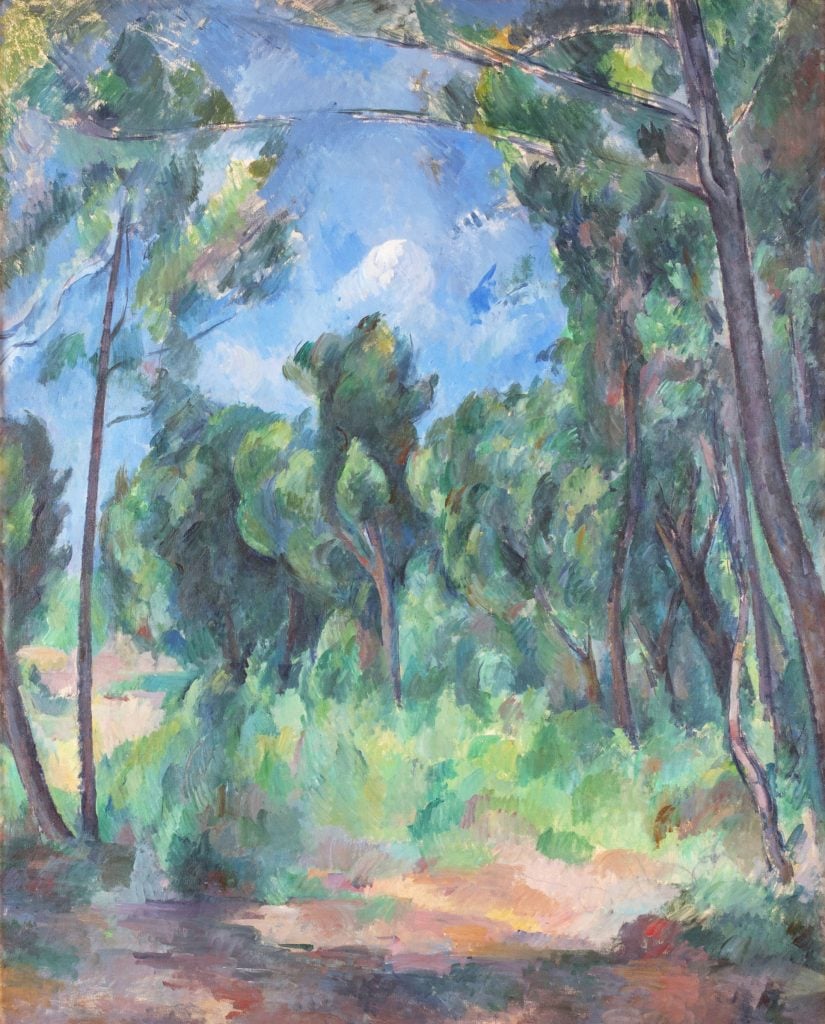
Paul Cézanne, Clairière (The Glade) (ca. 1895). Courtesy of Sotheby’s.
Other high-profile lots in the sale were Impressionist masterpieces that came from the collection of the Toledo Museum of Art—the largest institutional deaccession of the season (the Met sold a major Picasso sculpture at Christie’s last week). The Toledo Museum is directing the funds from the sale toward future acquisitions.
The highlight was Paul Cézanne’s Clairière (The Glade) from around 1895, which had been in the institution’s collection since 1942, and was estimated at $30 million to $40 million.
It ignited heated bidding from at least four buyers after opening at $24 million. At one point there was an online bid for $31 million, before it was eventually hammered down for $36 million to Helena Newman, chairman of Sotheby’s Europe and worldwide head of Impressionist and Modern art. The final price was $41.7 million.
Based on the paddle number Newman used, the client was also the successful bidder of another Toledo Museum offering, Henri Matisse’s Fleurs ou Fleurs devant un portrait (1923), a floral still life from the artist’s celebrated Nice period, estimated at $15 million to $20 million.
After tenacious bidding between Newman, a woman in the room, and other Sotheby’s specialists in New York and Hong Kong, Newman won it for $15.3 million with premium.
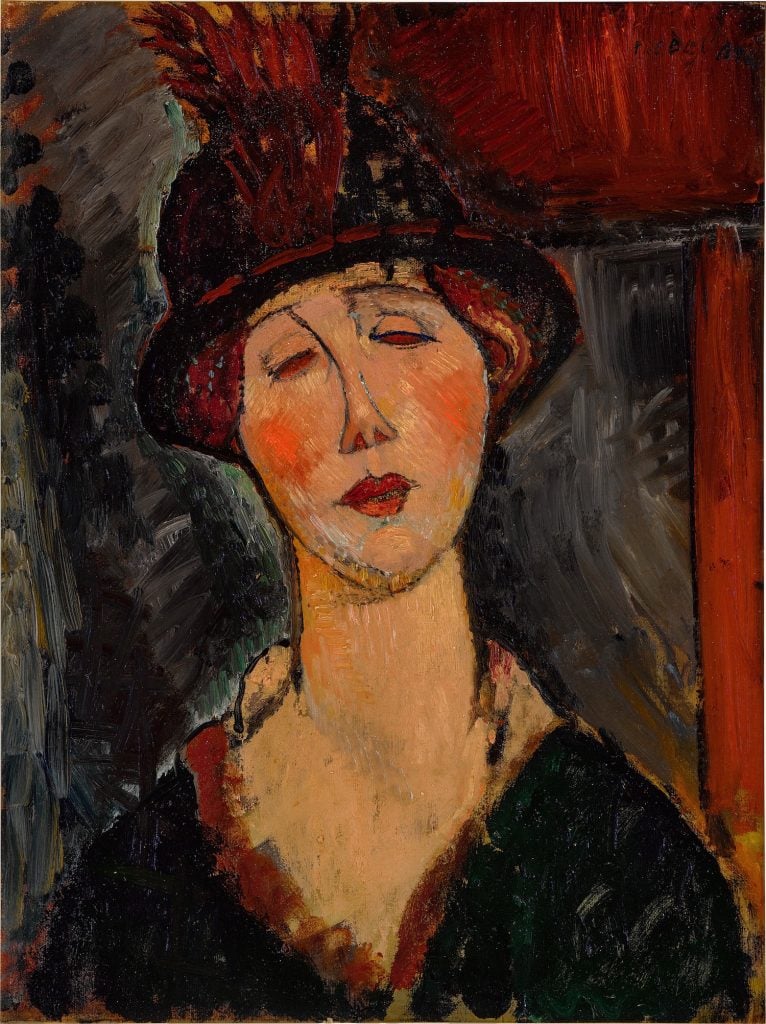
Amedeo Modigliani, Madame Dorival (1916). Image courtesy Sotheby’s.
Notable bidding wars for the night included Willem de Kooning’s Leaves in Weehawken (1958), which was chased by multiple bidders well past the high estimate of $5 million, ultimately selling for $10.1 million with premium.
Meanwhile, Alberto Giacometti’s Femme de Venise II (conceived in 1956, cast in 1976), blew past the $12 million high estimate (and presumably past the third party guarantor), to sell for $17.6 million to a client of Wong’s who was competing against a woman seated in the front of the saleroom.
New auction records were set for artists including Milton Avery, whose The Letter (1945) sold for just over $6 million, and Surrealist star Leonora Carrington, whose The Garden of Paracelsus (1957) sold for $3.2 million.
A signature Amedeo Modigliani portrait of a pensive looking woman with a long neck and almond-shaped eyes, Madame Dorival (1916), sold for $17.5 million with premium, above a presale estimate of $10 million to $15 million.
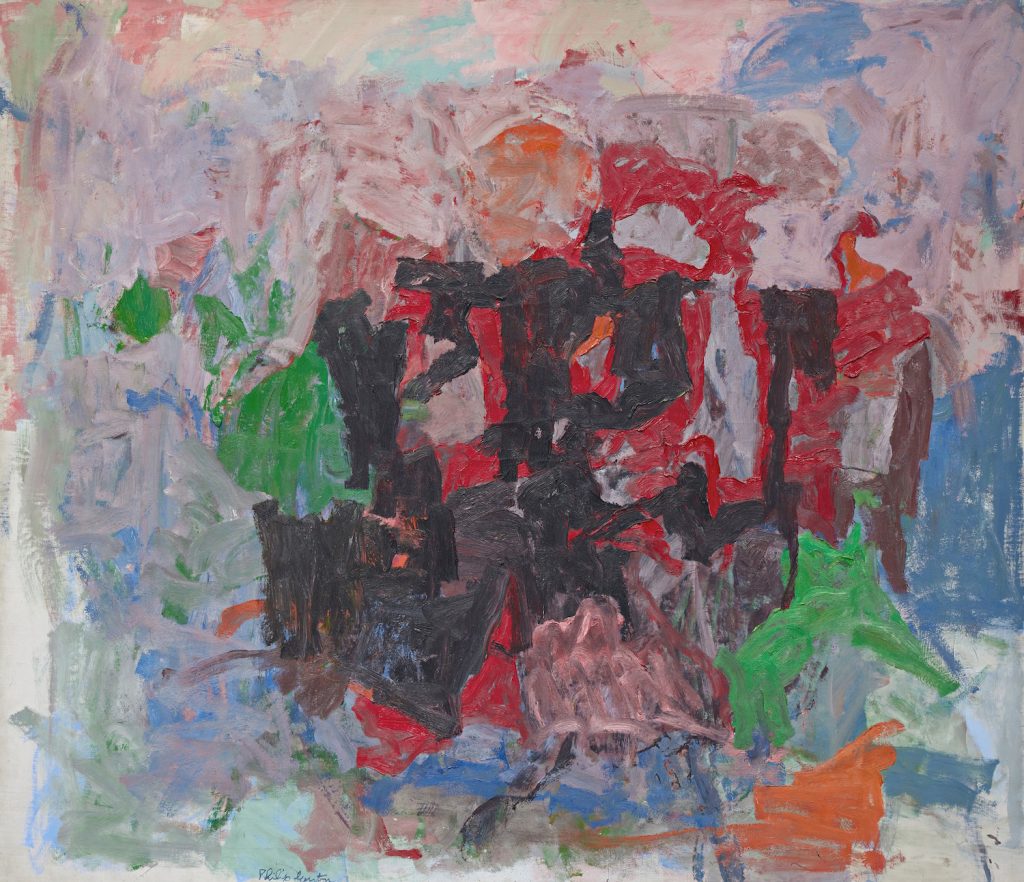
Philip Guston, Nile (1958). Image courtesy Sotheby’s.
Philp Guston’s 1958 abstract painting on a soft-pink background, Nile, was another work that presumably went to the third-party guarantor. It sold for a hammer price of $16 million or $18 million with premium, the latter, a price that still fell well below the low estimate of $20 million.
A signature Art Deco-style portrait of a woman draped in orange and glancing sideways by Tamara de Lempicka, Femme à la robe jaune (1929), was one of the night’s flops. Barker declared it a pass at $3.7 million and no discernible bids. (It was last sold at auction at Christie’s in May 2005 for $1.9 million, when the current seller acquired it.)
Of the total lots, 34, or more than half, carried irrevocable bids—meaning they were guaranteed to sell to outside buyers, offsetting the risk to the auction house—to the tune of at least $140 million, or about 40 percent of the overall low estimate of the sale.
“All that tells you is that you’re in a market that’s kind of bubbly,” art advisor Todd Levin said. “It’s not surprising because as the market ramps up, it’s easier for the auction house to sell those guarantees [to irrevocable or outside bidders] because there is greater demand than supply. When the market is hot, demand is significantly better than supply, and that’s where the number of guarantees really balloons.”